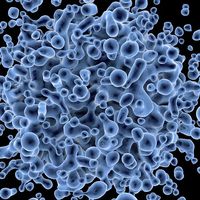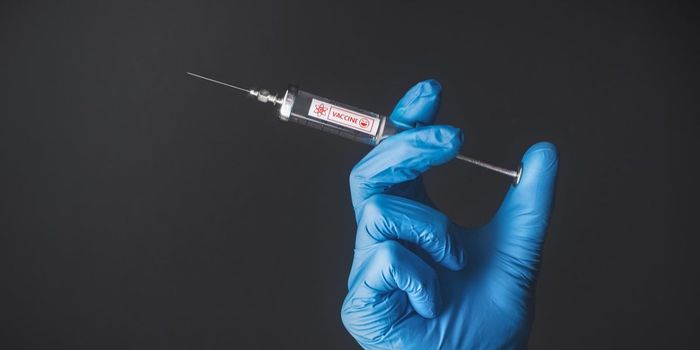Novel Work Informs How a Cell Pathway Activates Innate Immunity
Different pathways within the cell are activated or silenced dependent on the external signals acting on a cell. One such pathway includes the stimulator of interferon genes (STING) pathway which acts as a mediator of inflammation in the context of cell stress and tissue damage. This pathway is activated through external signals after foreign molecule detection, however long-term inflammatory induction can lead to disease. Several inflammatory diseases including autoimmune disorders and cancer are associated with upregulation of the STING pathway. Thus, many researchers have tried to developed effective STING inhibitors to halt chronic inflammation.
Due to the ability of the STING pathway to quickly detect foreign molecules, specifically viruses, it is instrumental in the innate immune response. STING helps elicit a cell response through the release of proteins or cytokines known as type I interferons. Type I interferon helps to alert the immune system to quickly target invaders. The innate immune system is the body’s first line of defense, which can detect foreign pathogens and eliminate them using various immune cells including neutrophils, eosinophils, basophils, macrophages, and natural killer cells. Innate immunity is less specific and known to broadly detect invaders to produce a quick immune response until the adaptive immune system can respond with more specificity. In this capacity the innate immune system will try and kill or lyse the infected cells they detect, but their ability to lyse cells is limited. To overcome this limitation, innate immune cells take debris from the lysed infected cells and presents it to more specific adaptive immune cells including T cells. T cells will then come in another wave of immune protection by specifically killing cells that were undetected previously.
Recently, scientists published an article in Nature Communications investigating the relationship between STING pathway and a protein known as TANK-binding kinase 1 (TBK1). TBK1 is activated when a viral infection occurs in the body. It has previously been inconclusive whether STING activates TBK1. Therefore, Dr. Kenichi G.N. Suzuki, Professor at the Institute for Glyco-core Research at Gifu University, and his team set out to determine the relationship between STING and TBK1. This gap in the field addresses the mechanism of how STING builds a response to viral infections in the innate immune system.
The research team used live-cell imaging and cluster analysis to determine that cholesterol plays a critical role in STING signaling. Specifically, cholesterol is essential to generate lipid organization in the STING pathway. Further investigation using a cholesterol biosensor revealed that cholesterol mediates STING-formed clusters that activate TBK1. Suzuki and others showed that increased STING clustering resulted in increased association with TBK1. This finding clearly states that TBK1 is directly related to STING activation in order to elicit an immune response.
Suzuki and others for the first time demonstrate the mechanism behind STING pathway activation to induce innate immunity in response to infection. The results expand the field by establishing a direct connection between STING and TBK1, but also allows us to more accurately target this pathway in STING-driven diseases. Overall, this finding will help improve therapeutic efficacy for patients with autoimmune disorders, cancers, and other inflammatory diseases.
Article, Nature Communications, Kenichi G.N. Suzuki, Institute for Glyco-core Research, Gifu University








